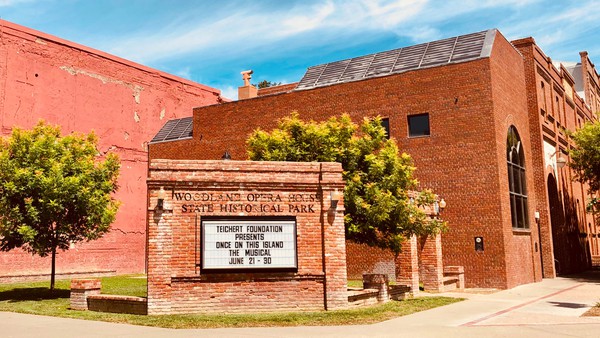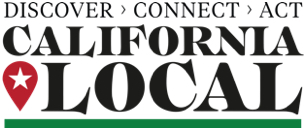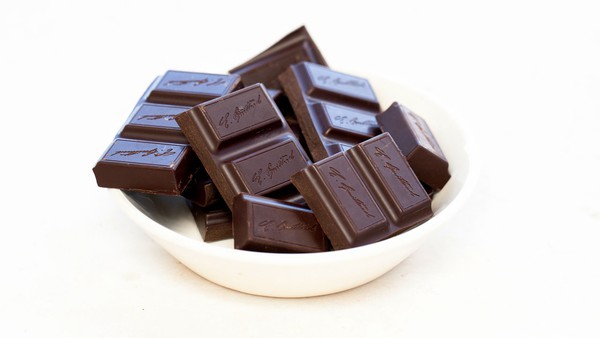John Kelly Chocolates, based in Los Angeles, expanded its color palette to include ruby cacao, a new chocolate variety created by European chocolatier Barry Callebaut in 2017.
For a baby boomer growing up in Southern California, a box of See’s Candies was meant to be savored. Unlike mass-produced candy bars, these chocolates required a special occasion. So it was disconcerting when a colleague from the Midwest wrinkled her nose at See’s, eschewing its nuts and chews for Daffin’s milk chocolate, a tradition in Pennsylvania and Ohio.
We would argue that for those who love dark chocolate, California rules. In a 2022 article titled “The Best Snack in Every State,” Food & Wine writer David Landsel asserted, “no place in America carries the humble cacao bean to greatness quite so ably as the Golden State. From everyday treats to the darkest single origins best nibbled by the shard with a glass of full-bodied red (local, of course), California has achieved chocolate nirvana.”
The Darker Side of Chocolate
It’s not just taste that sets our chocolate apart. It’s also the prevalence of “bean to bar” producers. Like so many raw materials in world history, cacao beans have been extracted cheaply from poor countries and processed into a commodity that profits wealthy ones. In the last couple of decades, a new generation of bean-to-bar chocolatiers began buying directly from farms that grow organic, sustainably produced cacao, and processing the beans themselves.
California has a plethora of chocolatiers who make traditional European-style bonbons, as well as those who craft rough-hewn bars from raw chocolate. In honor of Valentine’s Day, we’ve assembled a travel guide to California chocolate, from Eureka to San Diego.
History Channels
While we’re on the subject of California history—one of our favorite topics at California Local—here are a couple of quick reads. One is an evergreen story published by the Sacramento Observer a couple years ago about Sacramento’s African American historic landmarks. This registry of dozens of local sites, from churches to schools to civil rights organizations, was put together by Sacramento Girl Scout Maya Lee.
The other is a story just published this week that offers guidance on where to learn more about the history of Yolo County. We’ve published similar articles about other counties in our network, and here are the links where you can find those pieces: El Dorado County, Monterey County, Placer County, Sacramento County, San Benito County, Santa Clara County and Santa Cruz County.
Harvesting Information

Want to learn more about Yolo County’s history? Here are some good places to visit and sites to browse.
Landmarks of Black History

Where is Sacramento’s Black Wall Street? Which park was named after LeVar Burton? Find out on SacObserver.com.
As agents hunt for business in Southern California's slow real estate market, some are trying out new ways of tracking down leads. Others are quitting the industry.
(02/13/2024) Los Angeles Times
The state is to implement long-awaited new guidelines in 2025 despite some calls for a year’s delay.
(02/12/2024) EdSource
California Atty. Gen. Rob Bonta announced consumer tools to help tenants and landlords understand how much rent can rise under a state law.
(02/07/2024) Los Angeles Times
Here’s where they stand on the economy, crime and the border.
(02/07/2024) CapPublicRadio
UC Merced will be highlighted on an Amazon Prime show that showcases universities around the world.
(02/07/2024) San Joaquin Valley Sun
Journalism and democracy are undeniably intertwined. As the late media critic James Carey put it, “No journalism, no democracy; but, equally, no democracy, no journalism.”
(02/07/2024) Moonshine Ink
If educator candidates are paid a living wage and receive plenty of support, they are more likely to remain in the profession.
(02/06/2024) EdSource
There are different rules for the presidential contest and state races on the March 5 ballot. And each party has its own rules.
(02/06/2024) CalMatters
California’s utility regulators are exploring energy bill reforms that would structure charges based on household income. If done correctly, the change shift the cost for maintaining the grid to higher earners who can afford it.
(02/06/2024) CalMatters
California’s law that requires background checks when purchasing ammunition is back in place.
(02/06/2024) San Joaquin Valley Sun
California State Parks has recommended $6.7 million for seven local nonmotorized trail projects in various cities, including Galt and Gilroy.
(02/06/2024) YubaNet
Sen. Mike McGuire of Healdsburg takes over as Democratic leader in the state Senate from Sen. Toni Atkins. He terms out in 2026, so has limited time to push his agenda.
(02/05/2024) CalMatters
States are plowing billions of dollars into a high-stakes health care experiment that’s exploding around the country: using scarce public health insurance money to provide housing for the poorest and sickest Americans.
(02/05/2024) California Healthline
The storm fed off of unusually warm waters as it grew. It also reached “bomb cyclone” status as it neared California.
(02/05/2024) Los Angeles Times
Downtown Sacramento faces many challenges, but the growing number of small businesses, hotels, homes and other major developments signal its transformation, says the city’s mayor.
(02/05/2024) CalMatters
The Grateful Dead have broken the record for the most Top 40 albums to chart on the Billboard 200.
(02/05/2024) Daily Democrat
A handful of super powerful tropical storms in the last decade and the prospect of more to come has a couple of experts proposing a new category of whopper hurricanes: Category 6.
(02/05/2024) Daily Democrat







